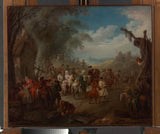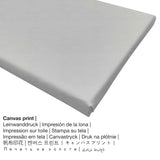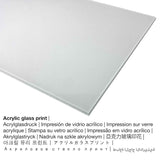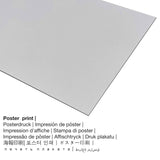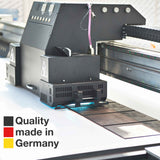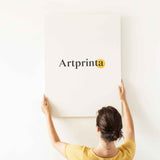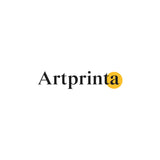Jean-Baptiste Joseph Pater, 1725 - Ndị agha na March - ọmarịcha nka
Ụtụ gụnyere. Mbupu gbakọrọ na ndenye ọpụpụ.
What does the The Metropolitan Museum of Art write about this 18th century artwork from the painter Jean-Baptiste Joseph Pater? (© Nwebiisinka - The Metropolitan Museum of Art - Museumlọ ihe ngosi nka nke Obodo)
A pupil of Watteau, Pater was born to the north at Valenciennes, an area which, having belonged to the Spanish Netherlands, had been restored to France in 1678. The wars of Louis XIV had ravished the northern territories and Pater would have seen the aftermath. As young men, he and Watteau both painted military subjects. The marchers, closely observed, wear contemporary dress and carry weapons and ammunition bags. Camp followers with babies, pots and pans, and pet dogs walk and ride beside them.
Summary of the classic art artpiece, which has the title "Troops on the March"
The 18th century piece of art "Troops on the March" was painted by the artist Jean-Baptiste Joseph Pater in 1725. Ihe nka nwere nha: 21 1/4 x 25 3/4 in (54 x 65,4 cm). Mmanụ na kwaaji was used by the artist as the medium of the masterpiece. Nowadays, this piece of art is included in the art collection of The Metropolitan Museum of Art. With courtesy of - Ụlọ ihe ngosi nka nke Metropolitan, New York, Arịrịọ nke Ethel Tod Humphrys, 1956 (ikike ngalaba ọha). : Arịrịọ nke Ethel Tod Humphrys, 1956. Ọzọkwa, itinye n'ọnọdụ bụ odida obodo na nwere a ruru nke 1.2: 1, nke pụtara na ogologo bụ 20% ogologo karịa obosara.
Họrọ ụdị ngwa ngwaahịa ọkacha mmasị gị
Maka mbipụta nka ọ bụla dị mma anyị na-enye ihe dị iche iche & nha dị iche iche. Ka ị kwekọọ n'ihe ị chọrọ nke ọma, ị nwere ike họrọ n'ime nhọrọ nhazi ngwaahịa ndị a:
- Metal (aluminium debond mbipụta): An Aluminium Dibond print is a print material with an outstanding effect of depth. The non-reflective surface structure creates a fashionable impression. A direct Direct Print on Aluminum Dibond is your best introduction to fine art prints with aluminum. For the Print On Aluminum Dibond, we print your favorite work of art right on the surface of the white-primed aluminum. The bright and white parts of the artpiece shine with a silk gloss but without glow. The colors are luminous and vivid, the details of the print appear crisp, and the print has a a matte look you can literally feel.
- Bipụta na iko acrylic (nke nwere ezigbo mkpuchi iko): The acrylic glass print, often described as a print on plexiglass, changes the original artwork into beautiful wall decoration and forms a great alternative to dibond or canvas fine art replicas.
- Akwụkwọ mmado na ihe kwaaji: Our poster print is a printed cotton canvas with a slight surface structure. It is optimally used for placing the art replica with a special frame. Please note, that depending on the size of the poster print we add a white margin 2-6cm around the print, which facilitates the framing.
- Mbipụta kanvas: A canvas direct print is a printed cotton canvas mounted on a wood frame. The advantage of canvas prints is that they are relatively low in weight, which implies that it is easy and straightforward to hang the Canvas print without the use of additional wall-mounts. Hence, canvas prints are suitable for all types of walls.
Tebụl nchịkọta ihe nkiri
| Aha onye nka: | Jean-Baptiste Joseph Pater |
| Gender: | nwoke |
| Obodo onye nka: | French |
| Ọrụ onye na-ese ihe: | onye na-ese ihe |
| Mba onye si: | France |
| Nkewa onye nka: | nna ukwu ochie |
| Nwụrụ na afọ nke: | 41 afọ |
| Afọ ọmụmụ: | 1695 |
| Afọ ọnwụ: | 1736 |
Ozi ndabere na nka pụrụ iche
| Aha nka: | "Troops on the March" |
| Nhazi: | sere |
| Category: | nka ochie |
| Nhazi oge: | 18th narị afọ |
| Afọ nka: | 1725 |
| Afọ nka: | gbara afọ 290 |
| Ọkara nke ihe osise izizi: | mmanụ na kwaaji |
| Akụkụ nke nka nka izizi: | 21 1/4 x 25 3/4 na (54 x 65,4 cm) |
| Egosiputara na: | Museumlọ ihe ngosi nka nke Obodo |
| Ebe ngosi nka: | New York City, New York, Njikota Obodo Amerika |
| Weebụsaịtị nke ihe ngosi nka: | www.metmuseum.org |
| Ụdị nka nka: | ngalaba ọha |
| Site n'aka: | Ụlọ ihe ngosi nka nke Metropolitan, New York, Arịrịọ nke Ethel Tod Humphrys, 1956 |
| Ebe E Si Nweta: | Arịrịọ nke Ethel Tod Humphrys, 1956 |
Nkọwa akụkọ ahaziri ahazi
| Ụdị ngwaahịa: | ọmarịcha nka |
| Usoro mmeputakwa: | dijitalụ mmeputakwa |
| Production usoro: | Mbipụta UV ozugbo (mbipụta dijitalụ) |
| Mmalite nke ngwaahịa a: | emepụtara na Germany |
| Stockdị ngwaahịa: | a na-achọ |
| Ojiji ngwaahịa: | nka mgbidi, ihe ndozi mgbidi |
| Nhazi onyonyo: | nhazi odida obodo |
| Njikwa oyiyi: | ogologo: obosara - 1.2: 1 |
| Ihe: | ogologo bụ 20% ogologo karịa obosara |
| Materials: | Mpempe akwụkwọ mmado (akwụkwọ kwaaji), mbipụta kanvas, mbipụta ọla (aluminium dibond), mbipụta iko acrylic (nwere ezigbo mkpuchi iko) |
| Nhọrọ nke Canvas Mbipụta (akwa akwa na etiti ihe ndọtị): | 60x50cm - 24x20", 120x100cm - 47x39" |
| Mpempe iko acrylic (nwere ezigbo mkpuchi iko) nha dị iche iche: | 60x50cm - 24x20", 120x100cm - 47x39" |
| Mbipụta akwụkwọ mmado (akwụkwọ kwaaji): | 60x50cm - 24x20", 120x100cm - 47x39" |
| Mbipụta nke aluminom (ihe aluminom): | 60x50cm - 24x20", 120x100cm - 47x39" |
| Nhazi mbipụta nka: | ngwaahịa anaghị emebi emebi |
Nkwupụta iwu: We try what we can in order to describe the art products as accurate as possible and to display them visually in our shop. Nevertheless, the colors of the printed materials, as well as the printing may differ slightly from the representation on the device's monitor. Depending on the screen settings and the nature of the surface, color pigments might not be printed 100% realistically. Considering that all the fine art prints are processed and printed manually, there may as well be slight differences in the exact position and the size of the motif.
© Nchekwa ikike nwebisiinka - Artprinta.com (Artprinta)

